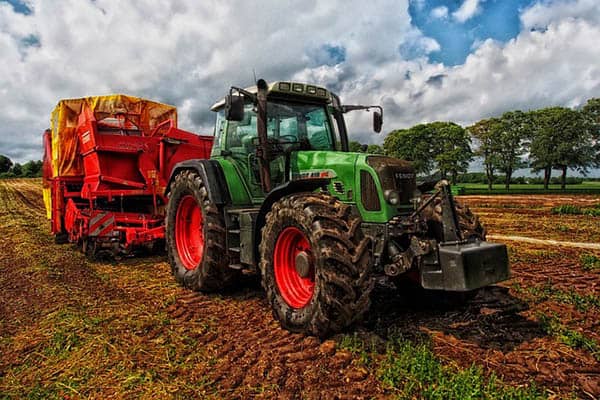Watch for slow-moving farm equipment
 As Virginia farmers plant their crops this spring, motorists should keep an eye out for slow-moving farm equipment on public roads—it could save a life.
As Virginia farmers plant their crops this spring, motorists should keep an eye out for slow-moving farm equipment on public roads—it could save a life.
Agriculture, forestry, fishing and hunting industry workers experienced one of the highest fatality rates at 20 deaths per 100,000 full-time workers in 2021. Transportation incidents, which include tractor overturns and roadway crashes, were the leading cause of death for these farmers and farmworkers, according to the Centers for Disease Control and Prevention.
Many of these deaths occur during spring planting season.
“Drivers can expect to see an increase in the amount of farm equipment out on the roads right now, and most of that equipment moves very slowly,” warned Matt Nuckols, Virginia Farm Bureau safety coordinator.
A car traveling 55 mph takes 5 seconds to brake 300 feet—the length of a football field—to avoid colliding with farm equipment traveling 15 mph.
To prevent catastrophe, drivers should look out for bright orange slow-moving vehicle emblems on the backs of farm tractors and self-propelled machinery. The signs warn that a vehicle is likely traveling 25 mph or slower.
Many farmers also use flashing amber lights, reflective decals, flags and escort vehicles to alert approaching drivers.
Nuckols said farmers are encouraged to use escort vehicles whenever they can—especially with equipment that’s wider than one travel lane.
Drivers should slow down when approaching farm equipment, and give themselves enough space to stop. Equipment operators cannot see drivers who are following too closely.
“There’s no benefit to being right on top of a tractor or piece of farm equipment,” he noted. “Just leave some extra space, and remember that they might be turning pretty soon.”
While it can be tempting to try to pass farm equipment, motorists should keep standard traffic laws in mind, and remember that it’s illegal to pass on a solid yellow line. Even if passing is allowed, Nuckols advised against it.
“Most of this equipment is not traveling very far, so if you do get behind one, just a little bit of patience can go a long way because they’re likely not going more than a mile or two.”
While many farmers move equipment between 11 p.m. and 4 a.m. or at midday to avoid peak traffic times, motorists should always expect to see farm equipment where there are farms—especially with a rising demand for locally grown food.
“If you’re willing to wait in line at the grocery store or for a table at your favorite restaurant, please provide that same patience for the farmers growing and raising your food,” Nuckols said.
Visit vafb.com/Safety for more information on rural road safety.









